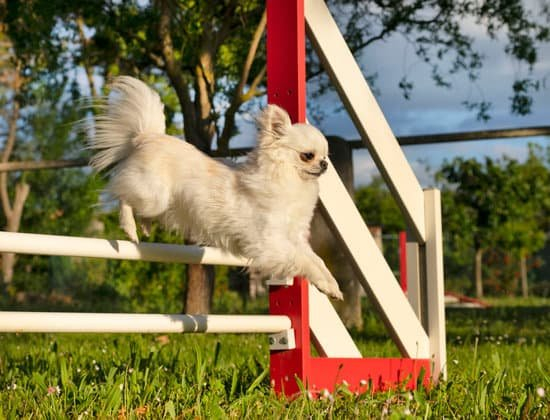Are you wondering if dogs can travel on the train? With the increasing trend of people taking their furry companions along on trips, train travel has become a popular option for pet owners.
The convenience and comfort of traveling with dogs on the train make it an appealing choice compared to other modes of transportation. In this article, we will explore the benefits, policies, tips, and essentials for traveling with dogs on the train, as well as share real-life stories of canine companions enjoying train journeys.
Traveling with pets has become increasingly common in recent years, with more and more people choosing to bring their four-legged friends along for the ride. As a result, many train companies have adapted their policies to accommodate these furry passengers. Whether it’s a short commute or a cross-country adventure, taking your dog on the train can be a stress-free experience for both you and your pet.
In this comprehensive guide, we will delve into the various aspects of traveling with dogs on the train. From understanding different train companies’ policies to providing practical tips for preparing and managing a trip with your canine companion, we’ll cover everything you need to know to ensure a smooth and enjoyable journey for both you and your furry friend.
So, if you’re considering taking your dog on a train trip in the near future, read on to learn all about traveling with dogs on the train.
Benefits of Traveling With Dogs on the Train
Traveling with dogs on the train offers numerous benefits for both pet owners and their four-legged companions. Unlike traveling by car or plane, train travel provides a more convenient and comfortable experience for dogs, making it an attractive option for pet owners looking to explore new destinations without leaving their furry friends behind.
Some of the key advantages of traveling with dogs on the train include:
- Spacious accommodations: Train cabins typically offer more space for pets to move around compared to cars or airplanes, allowing dogs to stretch their legs and relax during the journey.
- Reduced stress: The calmer atmosphere and gentle motion of trains can help alleviate anxiety and motion sickness in dogs, resulting in a more pleasant travel experience for both the pet and owner.
- Convenient amenities: Many train services provide onboard facilities such as designated pet areas, water stations, and pet-friendly seating options, enhancing the overall comfort and convenience of traveling with dogs.
The stress-free nature of train travel can make it an ideal choice for pet owners who want to ensure their dogs have a positive and comfortable travel experience. Additionally, the relaxed environment of train travel allows both pets and their owners to enjoy the journey without the hassles often associated with other modes of transportation. Overall, choosing to travel with dogs on the train can lead to memorable adventures and quality bonding time with beloved pets.
Train Travel Policies for Dogs
When it comes to traveling with your furry companion, many pet owners may wonder, “Can dogs travel on the train?” The good news is that an increasing number of train companies are recognizing the importance of accommodating pets on their services. From Amtrak in the United States to Eurostar in Europe, there are various options for pet owners who wish to journey by rail with their beloved dogs.
Each train company has its own set of policies regarding traveling with dogs, so it’s essential to do your research before booking your trip. Some companies may have specific size and breed restrictions, while others may require that dogs be kept in carriers or remain leashed while on board. Additionally, there are likely to be guidelines related to pet fares, reservations, and designated pet-friendly areas within the trains.
It’s important for dog owners to familiarize themselves with these policies and understand the requirements and regulations for bringing a dog on board a train. By doing so, they can ensure a smooth and hassle-free experience for both themselves and their canine companions as they embark on their rail adventures.
Tips for Traveling With Dogs on the Train
Traveling with dogs on the train offers a convenient and comfortable experience for both pet owners and their furry companions. Compared to other modes of transportation, train travel provides ample space for dogs to move around and relax during the journey.
Additionally, the stress-free environment can help alleviate any anxiety or discomfort that dogs may experience when traveling. With proper preparation and knowledge of train travel policies for dogs, owners can ensure a smooth and enjoyable trip for their pets.
When preparing for a train journey with a dog, it is essential to consider the comfort and well-being of the pet throughout the trip. One practical tip is to acclimate the dog to the train environment before the actual journey. This can be done by visiting a train station with the pet to familiarize them with the sights, sounds, and surroundings.
Another important aspect is to pack necessary supplies such as food, water, bedding, and toys to keep the dog comfortable during the trip. To minimize stress and anxiety during travel, it is recommended to maintain a routine as much as possible to provide a sense of familiarity for the dog.
In addition to preparing for the trip itself, it is also crucial to keep in mind potential issues that may arise during train travel with a dog. Motion sickness or anxiety are common concerns for pets while on board. Owners can consult with a veterinarian about potential remedies or calming techniques that can help alleviate these issues for their furry companions.
| Train Travel Tips | Details |
|---|---|
| Acclimate your dog to the train environment | Visit a train station with your pet before traveling to familiarize them with the surroundings |
| Pack necessary supplies | Bring food, water, bedding, and toys to keep your dog comfortable during the journey |
| Address potential issues | Consult with a veterinarian about motion sickness or anxiety remedies for your pet |
Choosing the Right Train for Dog Travel
When it comes to choosing the right train for traveling with your dog, there are several factors to consider to ensure a comfortable and stress-free journey. Different train services offer varying accommodations and amenities for pets, so it’s essential to research and select the best option for your furry companion. Here are some considerations to keep in mind when choosing the right train for dog travel:
- Size of the Train: Larger trains often have more space and designated areas for pets, allowing them to move around comfortably during the journey.
- Pet Policies: Look into the specific pet policies of different train companies to understand their rules and regulations regarding traveling with dogs. Some companies may have restrictions based on the size or breed of the dog.
- Amenities: Consider the amenities offered on board, such as pet-friendly seating, rest areas for pets, or designated pet relief areas at stations during layovers.
Additionally, if you’re planning a long-distance or international trip with your dog, it’s important to choose a train service that can accommodate both your needs and those of your furry friend.
- Long-Distance Travel: For long journeys, consider trains that offer sleeper cabins or overnight accommodations where you and your dog can rest comfortably.
- International Travel: If you plan to travel across borders with your dog, make sure to check the international pet travel regulations and choose a train service that is equipped to handle these requirements.
By carefully considering these factors and researching different train services, you can select the right train for dog travel that will provide a safe and enjoyable experience for both you and your canine companion. Whether it’s a short domestic trip or a cross-country adventure, traveling with your dog on the train can be a rewarding experience when you choose the appropriate service.
Preparing Your Dog for Train Travel
When it comes to traveling with your dog on the train, preparation is key to ensuring a smooth and stress-free journey for both you and your furry companion. Dogs are generally adaptable to new environments, but acclimating them to the train environment before your trip can make a significant difference in their comfort and behavior on board. Here are some essential tips for preparing your dog for train travel.
First and foremost, it’s important to familiarize your dog with the sights, sounds, and sensations of a train. You can start by introducing them to the concept of train travel at home, such as playing recorded train sounds or simulating gentle movements similar to those experienced during a train ride. This can help desensitize your dog to potential stress triggers associated with train travel.
Additionally, consider taking short practice trips to a local train station or riding on a quiet section of a commuter train with your dog. Gradually exposing them to the actual experience of being on a train can help alleviate any anxiety or nervousness they may feel when it’s time for the real journey.
Lastly, ensure that your dog is comfortable and familiar with their travel carrier or crate. Whether you opt for a soft-sided carrier or a sturdy crate, allowing your dog to spend time in their designated travel space leading up to the trip can help reduce any apprehension they may have about being confined during the journey.
By taking these proactive steps in preparing your dog for train travel, you can help minimize potential stress and anxiety while ensuring a positive experience for both you and your pet.
| Essential Tips | Details |
|---|---|
| Familiarize Your Dog with Trains | Introduce them to recorded sounds and gentle movements resembling those experienced during a train ride. |
| Practice Trips | Take short trips to local stations or ride on quiet sections of trains to acclimate them gradually. |
| Comfort in Carrier/Crate | Allow your dog time in their designated travel space beforehand to reduce anxiety about confinement. |
Canine Travel Essentials for Train Journeys
When traveling with dogs on a train, it is essential to be prepared with all the necessary items to ensure a smooth and comfortable journey for both you and your furry companion. Whether it’s a short commute or a long-distance trip, having the right canine travel essentials can make all the difference in ensuring a stress-free experience for your pet. Here are some important items that you should consider when traveling with your dog on the train.
Carriers and Restraints
One of the most important canine travel essentials for train journeys is a secure and comfortable carrier or restraint for your dog. Depending on the train company’s policies, you may be required to keep your dog in a carrier at all times.
Look for a well-ventilated and sturdy carrier that provides enough space for your dog to stand, turn around, and lie down comfortably. If your dog is too large for a carrier, consider using a harness and leash that can safely restrain them during the journey.
Bedding
To ensure your dog’s comfort during the train ride, bring along their favorite bedding or blanket. This familiar scent can help alleviate any anxiety or stress they may experience while traveling. Additionally, having a comfortable place to rest can help keep your dog calm and relaxed throughout the journey.
Food and Water
Pack enough food and treats for your dog to last the duration of the train journey, as well as some extra in case of any delays. It’s also crucial to bring along a portable water bowl and plenty of fresh water to keep your dog hydrated during the trip. Consider feeding your dog several hours before departure to prevent any motion sickness while on board.
In addition to these essentials, don’t forget to bring waste bags for cleaning up after your dog, any necessary medications, vaccination records (especially if you are traveling internationally), and identification tags with updated contact information. Being well-prepared with these canine travel essentials
Real-Life Stories of Dogs Traveling on the Train
There are countless heartwarming and amusing anecdotes of dogs traveling on the train with their owners. One such story involves a golden retriever named Max, who embarked on a cross-country train journey with his family.
Max’s owner, Sarah, shared how the spacious and pet-friendly accommodations on the train made the trip much more enjoyable for both Max and herself. She described how Max was able to stretch out comfortably in his designated area, and she even met other dog owners during their stops at various stations.
Another touching tale comes from a traveler named James, who brought his rescue dog, Luna, on a scenic train ride through the countryside. James mentioned that Luna had initially been nervous about boarding the train, but with some patience and reassurance, she quickly settled in for the ride.
According to James, Luna seemed to relish the sights and sounds passing by outside the window, and he was grateful for the opportunity to bond with her during their time together on the train.
Many pet owners have also shared their experiences of traveling internationally with their dogs via train. One such traveler, Maria, recounted her adventure of taking her small dog, Bella, on a European rail journey.
Despite initial concerns about language barriers and unfamiliar regulations, Maria found that most train companies were accommodating to canine passengers. She marveled at how Bella adapted to the unique experience of traveling from one country to another by train and cherished the memories they made together along the way.
These real-life stories demonstrate that dogs can indeed travel on the train in a safe and fulfilling manner. Whether it’s a domestic excursion or an international escapade, many pet owners have found that train travel offers an excellent option for exploring new destinations with their beloved furry companions.
Their experiences serve as inspiring examples of the joy and companionship that can be shared between dogs and their human travel partners when choosing this mode of transportation for their adventures.
Conclusion
In conclusion, traveling with dogs on the train can be a convenient and enjoyable experience for both pet owners and their furry companions. As the trend of pet-friendly travel continues to grow, many train companies are adapting their policies to accommodate dogs on board. The benefits of train travel for dogs, including comfort, ease of movement, and reduced stress compared to other modes of transportation, make it an appealing option for pet owners.
When considering bringing a dog on a train journey, it is essential to familiarize oneself with the specific policies and regulations of each train company. From size restrictions to required documentation, understanding these requirements can help ensure a smooth and hassle-free travel experience for both the dog and its owner.
As more pet owners opt for train travel with their dogs, it is important to prepare adequately for the journey. This includes acclimating the dog to the train environment, packing essential supplies such as carriers and bedding, and addressing any potential issues such as motion sickness or anxiety.
By taking these factors into account, pet owners can create a positive and enjoyable experience for their canine companions on the train. So yes, your furry friends can indeed join you on your future train travels.
Frequently Asked Questions
Can I Buy a Seat for My Dog on Amtrak?
Unfortunately, Amtrak does not allow pets, including dogs, to have their own seats on the train. Only service animals are permitted to travel with their owners in the passenger cabin.
Can I Take My 50 Pound Dog on Amtrak?
While Amtrak does not have a weight limit for dogs traveling with their owners, they must be able to fit comfortably in a carrier under the seat or the owner’s seat. Larger dogs may not be allowed if they cannot fit in these designated areas.
Can My Dog Sit on My Lap on Amtrak?
Amtrak allows small pets to sit on their owner’s lap during the trip if they are small enough to fit comfortably in a carrier under the seat or on the owner’s lap without causing a disturbance to other passengers. However, this policy varies depending on the route and availability of space.

Welcome to the blog! I am a professional dog trainer and have been working with dogs for many years. In this blog, I will be discussing various topics related to dog training, including tips, tricks, and advice. I hope you find this information helpful and informative. Thanks for reading!





